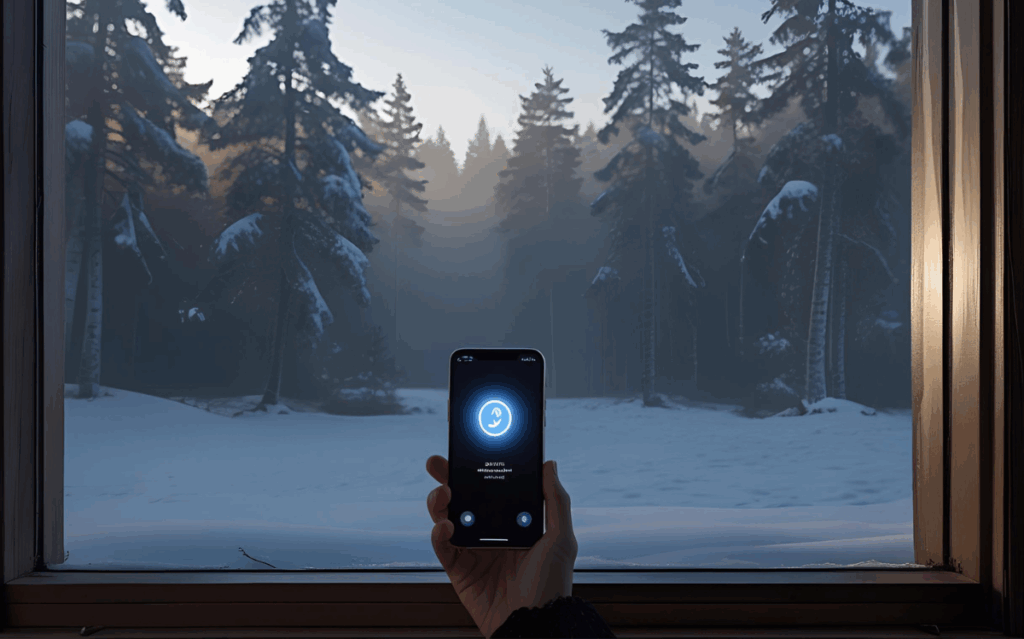When we moved to a remote part of Alaska, the silence hit us hard—not just the stillness of nature but the isolation from communication. Getting a free phone through Alaska’s Lifeline program changed everything. It’s not merely about having a device; it’s our lifeline to family, emergency services, and job opportunities.
The program offers free phone service to low-income residents, including those in rural areas like ours. We found the application process a bit tedious, but the connection we gained is priceless. If you’re in a similar boat, look into this program. You might find it’s just what you need.
Key Takeaway
- The Lifeline program provides free phones and service to eligible low-income Alaskans, including those in remote and tribal areas.
- Eligibility depends on income or participation in federal and tribal assistance programs, verified through the USAC National Verifier.
- Activation with local providers ensures coverage even in Alaska’s most isolated communities, with annual recertification to maintain service.
Lifeline Program Overview
What is Lifeline?
Purpose and scope of the program
We see every day how Alaska’s size isn’t just a number on a map—it’s a real barrier. Our neighbors can be hours away, and sometimes the only way to reach help is by phone. Lifeline steps in where regular service just doesn’t reach.
We’ve watched folks who never had a steady phone finally get connected, and it’s not just about chatting. It’s about calling for help when the generator dies or checking in on family when the river floods.
Our experience with Lifeline shows it’s more than a handout. It’s a program built for people like us—those who live far out, or who just can’t swing a regular phone bill. We’ve seen the free phones Alaska hands out—sometimes they’re basic, sometimes they’re smartphones, but they all work. The plans usually cover calls, texts, and a few gigs of data. That’s enough for emergencies, job hunting, or checking the weather when a storm’s coming.
Services provided (phone, internet, data)
We’ve tried a few Lifeline plans ourselves, and most include:
- Free talk and text (sometimes unlimited)
- 3GB to 6GB of monthly data
- Basic smartphones or flip phones
- Some hotspot data (if you’re lucky with coverage)
Our friends use these plans for everything from telehealth to schoolwork. The data isn’t huge, but it’s enough for what matters. We’ve noticed that even in the bush, the signal holds up better than we expected. That’s because some providers piggyback on big carrier towers. So, while it’s not always perfect, it’s not second-rate either.
Administration and coverage in Alaska
Role of USAC
We deal with USAC—the Universal Service Administrative Company—every time we apply. They run the National Verifier, which checks if we’re eligible. Sometimes it’s a mess. We’ve had to send hand-drawn maps because our homes don’t show up on GPS. It can take weeks, and we always keep extra copies of everything—tribal IDs, bills, whatever they’ll accept.
USAC handles the paperwork and tries to keep things fair, but it’s slow. We know they’re working behind the scenes, but it’s a lot of waiting and hoping nothing gets lost.
Inclusion of rural and tribal communities
Our area’s different. Lifeline knows that, so tribal members get extra help. We’ve seen neighbors qualify through Tribal TANF, BIA General Assistance, or even Head Start. Sometimes they use satellite images to find our homes. The tribal benefit means bigger discounts and more folks can get in.
It’s not about handouts. It’s about making sure we’re not left behind. Lifeline’s not perfect, but it’s trying, and that matters up here.
Eligibility Criteria for Alaska Residents
Income-based eligibility
Federal Poverty Guidelines specific to Alaska
We figured out fast that Alaska’s poverty line is higher than the rest of the country, and for good reason. Groceries, heating oil, gas—everything’s pricier here. The Lifeline phone programs use Alaska’s own federal poverty guidelines.
By 2025, you’ll qualify if your income is at or below 135% of the Alaska federal poverty line. That’s about $26,393 a year for one person, or $54,257 for a family of four. Most of us in rural areas land under those numbers, especially with seasonal jobs.
We keep our W-2s and tax returns close. Even if you work odd jobs, you probably qualify if you’re under the cutoff.
Household size and income thresholds
Turns out, household size is a big deal. It’s not just parents and kids—anyone sharing bills counts. For six people, the limit’s around $70,000.
We had to list everyone living with us, even if they weren’t family. Felt odd, but it’s how they check for Alaska free phone eligibility. Honesty’s key.
Program-based eligibility
Federal assistance programs accepted (SNAP, Medicaid, SSI, FPHA, Veterans Benefits)
We usually use our benefits letters instead of income proof. SNAP, Medicaid, SSI, public housing, or Veterans Pension all work.
A recent Medicaid letter got us through. If you’re in public housing or on SNAP, your household can qualify too.
Additional tribal programs (BIA General Assistance, Head Start, Tribal TANF, Food Distribution Program)
Tribal members get more options. BIA General Assistance, Tribal TANF, Head Start (if it’s income-based), and Food Distribution Program letters all count.
We’ve used a letter from the tribal council—worked fine.
Documentation requirements
Types of acceptable proof
We keep a folder with:
- Tax returns
- Benefit letters
- SSI paperwork
- Tribal cards
- Housing lease
- VA pension letters
A signed letter from a program director works for tribal eligibility.
Timeframe for documentation validity
Everything’s got to be current—within the last year. We set reminders to update paperwork and recertify, so we don’t lose our phones.
Application and Activation Process
Credits: Low Income Relief
Applying through the USAC National Verifier
Online application steps
We expected a headache, but applying turned out easier than we thought. The USAC National Verifier website isn’t flashy—looks like something from a decade ago—but it works. We entered our names, birthdates, last four digits of our Social Security numbers, and listed everyone living in our house. Took maybe 20 minutes, though it would’ve been quicker if we’d had all our paperwork ready to go.
Best thing we did was gather our SNAP letter, Medicaid card, and whatever else we needed before starting. If you’re missing something, you’ll waste time logging out and back in. Sometimes, if you’re already on programs like SSI or Alaska Medicaid, the system finds you right away and you’re done. That’s rare, though.
Automatic vs. manual verification
We weren’t approved automatically. Instead, we had to upload our Medicaid approval letter and a power bill to prove our address. For those of us living out in the bush, where mail can take weeks and scanners are hard to find, this part can drag on.
Still, it’s doable. If you get pushed into manual review for the Alaska free government phone, don’t panic. Happens a lot, especially for tribal Lifeline applicants whose records might not match up. We waited about three extra days for them to check our stuff.
Address verification requirements
Importance of precise physical address
We thought a P.O. box would work, but it didn’t. Lifeline wants a real, physical address—where the phone will actually be used. That’s how they check if you qualify under Alaska’s remote area rules. We had to dig up our rural route address from an old tax form. Even then, the system gave us trouble.
Use of mapping tools for tribal lands
The mapping tool in the application finally did the trick. It lets you drop a pin on your house or cabin using satellite view. That’s how they know you’re in a tribal or underserved area. We had to do it twice because the first pin landed in the wrong spot. Zoom in and double-check.
Activation with Lifeline providers
Timeline for activation after approval
After getting the approval email, we had 90 days to pick a provider. That’s plenty, but don’t wait. If you let it expire, you’ll have to start over. We called a local Lifeline provider, gave them our confirmation number, and picked a plan.
Notable providers in Alaska
We chose a provider that covers most bush communities, but there are other local options as well. Both walked us through activation. We got a basic smartphone with a SIM card already in it. Setup took just a few minutes. Free talk, text, and a monthly data plan. No activation fee, which was a relief.
Service Features and Maintenance

Coverage and service availability in remote areas
Network reach in rural and tribal regions
Our signal comes and goes, but mostly it works. That’s saying a lot where we live. Alaska rural phone service isn’t perfect—some valleys and heavy snow block towers—but for checking weather, making doctor appointments, or reaching the plane guy, it’s been enough. Most Alaska free cell phone plans cover the big tribal areas. Still, don’t expect blazing speeds. It’s made for practicality, not streaming.
Types of phones and plans offered
We were given a smartphone. Nothing fancy, but it runs WhatsApp, has GPS, and can call 911. The plan includes:
- Unlimited texts
- 1000 minutes
- 3GB of monthly data
- Voicemail and caller ID
That was the standard for Alaska no cost phone service when we signed up. If you ask, they sometimes offer upgraded plans for tribal members, seniors, or veterans.
Annual recertification requirements
Process for maintaining eligibility
Each year, we log back into the National Verifier to confirm we still qualify. If you get SNAP, SSI, or live under Alaska poverty guidelines for phone benefits, you’re probably still eligible. But you have to prove it again. Usually it’s easier the second time—less uploading unless something changed. We get a text reminding us to recertify.
Importance of keeping contact and address information updated
Don’t forget to update your info if you move. We learned that the hard way. Our old address made the system glitch out. If you lose service or move to a non-qualifying area, your free phone plan could get cut. That’s true even if you still qualify under income or tribal benefits. We keep a copy of every recertification notice just in case.
Practical Advice from Our Experience
We learned fast that patience helps. The Alaska Lifeline phone application isn’t hard, but it’s not one-click simple either. Keep your documents nearby—proof of income, address, and ID. Use the map tool carefully, especially if you’re on tribal lands. Reach out to a provider as soon as you’re approved. Don’t assume service will start automatically—it won’t.
If you qualify for Alaska free phone service—because of Medicaid, SNAP, SSI, or tribal membership—it’s worth it. That phone saved us in two emergencies, helped schedule appointments, and let our kids check in when away from camp. It’s not just a free phone—it’s a lifeline.
FAQ
What is the Alaska free government phone program and how does it help people in remote areas?
The Alaska free government phone program gives people in Alaska remote areas a way to stay connected. If you live far from cities, the Lifeline program Alaska can help you get a free phone service Alaska plan. This means you can make calls, text, and sometimes use data without paying much—or anything at all. It’s meant for people who live in places where phone service is expensive or hard to find.
Who qualifies for Alaska free phone service and how do I check eligibility?
You can get a free cell phone Alaska through the Alaska low income phone program if you meet the rules. These rules, called free phone eligibility Alaska, are based on income or if you already get help like Alaska Medicaid, SNAP, or SSI. Veterans may also qualify through the Alaska veterans free phone option. If you live on tribal land, the Tribal Lifeline Alaska program might help too.
How do I apply for an Alaska Lifeline phone and what do I need?
To apply for an Alaska Lifeline phone, you must fill out an Alaska Lifeline phone application. You’ll need to show your income or proof you get help like SSI, SNAP, or Medicaid. The rules follow Alaska Lifeline income eligibility. If you’re in a tribal area, the Alaska Lifeline tribal benefit can give you more help. The Alaska Lifeline phone enrollment process is simple if you already get other government benefits.
Conclusion
Getting a free phone in Alaska’s remote areas through the Lifeline program isn’t just helpful—it’s a real lifeline. In a state where long distances and harsh weather can isolate us, staying connected matters. For low-income families, veterans, and seniors, this program means having a direct link to emergency help, doctors, and loved ones.
We make sure to keep our details up to date and recertify every year, so we don’t lose this vital service. Want to see if you qualify? Apply for Lifeline here through Free Government Phone by State, a helpful directory that makes it easy to find and apply for programs in your area.


